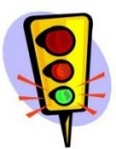
Worksheets and No Prep Teaching Resources
Reading Comprehension Worksheets
Transportation

Transportation
 Worksheets and No Prep Teaching Resources Reading Comprehension Worksheets Transportation |
 Transportation |
| edHelper's suggested reading level: | grades 5 to 7 | |
| Flesch-Kincaid grade level: | 8.82 |
| Print Mission - Manual Transmission (font options, pick words for additional puzzles, and more) |
| Quickly print reading comprehension |
| Print a proofreading activity |
|
Mission - Manual Transmission
By Trista L. Pollard |

|
 1 An automobile's ultimate mission is to use gasoline-fueled mechanical energy to move forward. The engine uses the gasoline to generate the power necessary for a vehicle to move. However, it is the transmission that is responsible for the movement of an automobile's wheels.
1 An automobile's ultimate mission is to use gasoline-fueled mechanical energy to move forward. The engine uses the gasoline to generate the power necessary for a vehicle to move. However, it is the transmission that is responsible for the movement of an automobile's wheels. |
Create Weekly Reading Books
Prepare for an entire week at once! |
| Leave your feedback on Mission - Manual Transmission (use this link if you found an error in the story) |
 |
Transportation
|